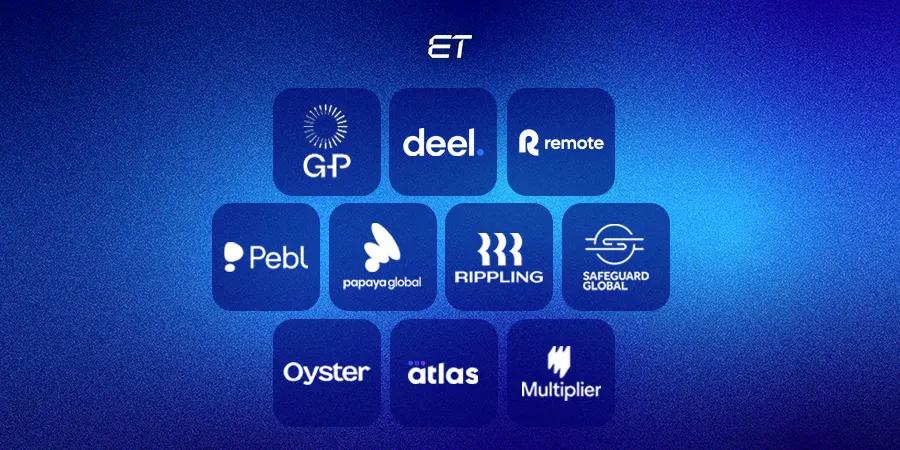
CTO’s Guide to Hiring and Managing a Remote Software Development Team
Running a business means balancing tight budgets, tighter deadlines, and the hunt for top talent. As a software development company with over 22 years of experience, we’ve cracked the code for building a remote development team that delivers great results.
A remote development team is a group of software professionals like developers, testers, designers, and project managers. They work from different locations, often across time zones, but collaborate just like an in-house team.
In a recent Stack Overflow Survey, it was clear that 38% of developers work remotely. Whereas, only 20% of the respondents prefer the in-person mode. This statistic wasn’t surprising. Remote teams give you access to global experts, slash overhead, and keep your business agile in a fast-moving market. So, whether you’re a CTO eyeing cost savings or a CEO chasing innovation, this guide is for you.
Without any ado, understand the tried-and-tested approach to managing remote teams for your business. Just scroll ahead!
Stop searching. Hire dedicated remote developers and save up to 40% on costs.
Why Choose a Remote Software Development Team?

We’ve been in the software game for over 22 years, and one truth stands out: remote development teams aren’t just an option; they’re a superpower.
For us, it’s about breaking free from the local talent bottleneck. Today, businesses based in the US or Europe prefer picking handpicked experts. Take a look at these interesting numbers:
- Nearly 43% of software developers are working remote (According to a Turing survey)
- We mentioned in the intro that 38% of developers work remotely (From Stack Overflow’s study)
- So, we can safely assume that approx. 40% of developers are remote workers
Now, let’s jump to the ‘team’ aspect. Rather than choosing the unorganized setup of most freelancers, a systematic model proves useful. Here, the remote team concept proves remarkable.
Here are the main reasons:
- Remote teams slash costs (no fancy office leases or utility bills eating into your budget)
- Agility? Unmatched. You can scale teams up or down as projects shift
This model is popular as offshore software development. In 2025, this market can grow to over USD 179 billion. Overall, this is another solid reason to capitalize and hire dedicated remote development team.
Key Aspects of Remote Development Teams
Building a remote software development team isn’t just about hiring people who happen to own a laptop. There’s a structure to this strategy. Here are the key aspects that make remote development teams deliver great results.
1. Access to Global Talent
You’re no longer limited by geography. Remote development lets you tap into top-tier engineers from anywhere. This facet opens the door to specialized skill sets that might be scarce (or overpriced) in your local market.
2. Flexibility and Scalability
Need to scale up your team for a product launch? Or scale down once the MVP is live? Remote teams give you that breathing room. You can add or reduce resources without the hassle of hiring (or firing) in-house.
3. Cost Efficiency
Let’s be honest: budgets matter. With a remote model, you can tackle overhead costs like office rent, utilities, and on-site perks. Plus, hiring globally means you can get high-quality talent at a lower cost without compromising on results.
4. Project Management
The backbone of any remote team is strong project management. With tools like Jira, Asana, or Trello, you can track tasks, set milestones, and maintain visibility. A solid PM (or Scrum Master) keeps the wheels running well.
5. Performance Management
Out of sight doesn’t mean out of mind. Performance is tracked based on outcomes, not office hours. That means using KPIs, code reviews, and regular feedback loops to keep quality high and momentum strong.
6. Communication Tools
Zoom, Slack, Notion, Loom are your remote team’s lifeline. The right stack of communication tools ensures real-time collaboration, async updates, and zero confusion. So, define communication norms early to avoid tool overload.
How to Hire a Remote Software Development Team?

So, by now, you must agree that remote software development teams are the way ahead. Now, let’s get into the nitty-gritty of building one and finalizing the decision to hire remote development team.
After 22 years of providing such teams to our clients, we’ve nailed down a hiring approach that works. It’s not just about finding coders; it’s about assembling a crew that fits your vision and delivers results.
Here’s how you can do it, step by step.
1. Pinpoint the Skills You Need
Be crystal clear on your project demands.
- Need a full-stack developer fluent in React and Node.js?
- Prefer a data expert who lives for Python and SQL?
Map out must-have skills and nice-to-haves before we even start looking. This keeps you laser-focused and cuts through the noise of endless resumes.
2. Tap Into Global Talent Pools
Forget the local job boards. Choose organizations like ours that employs vetted talent.
If you want, platforms like GitHub, Toptal, and Upwork can help scout developers worldwide. However, offshore software development centers are your safest bet due to a transparent NDA agreement and a dedicated project manager in place.
Pro tip: If you’re hiring freelancers, check their portfolios or past commits to see real proof of their work.
3. Test Communication Early
Remote work thrives on clear communication, so you shouldn’t overlook this aspect. Set up video calls to gauge how candidates explain ideas.
Can they break down complex stuff without jargon? A brilliant coder who can’t sync with the team is a liability. If they’re dodging Slack pings or mumbling through Zooms, be ready to move on.
4. Run a Paid Trial Project
Talk is cheap, but code doesn’t lie. You can assign a small, paid test task (a one-week sprint on a real feature).
It’s how you spot the doers who hit deadlines and the ones who flake. One of our clients gave a test to our developer who nailed a tricky API integration in three days. He’s been working with them for multiple projects.
5. Lock In Cultural Fit
Always prefer developers who vibe with your pace and values. Self-starters who don’t need hand-holding are the best picks.
During interviews, you can ask about their remote work habits:
- How do they stay motivated?
- How they handle time zones?
On the other hand, if you contact us, this step becomes less taxing as we already have a team of programmers who work on international projects and know the work culture of businesses in the US, the UK, Australia, and more.
Over 22 years, clients have acknowledged our team’s culture fit. Explore more reasons fueling our utility.
How to Manage a Remote Development Team?
Now that we’ve covered how to hire top-tier remote developers, let’s talk about keeping them efficient and up-to-date. Here are some tips that can work wonders for your business.
1. Set Clear Expectations Upfront
Here are three things you should communicated beforehand:
- Deadlines
- Deliverables
- Communication norms
Whether you’re working from New York or Singapore, aligning the remote developers with your goals is essential. Every project should start with a detailed brief. This way, the remote development team knows exactly what success looks like.
2. Leverage the Right Tools
An ideal remote software development team succeeds because of tools like MS Teams for quick chats, Trello for tracking tasks, and Skype for face-to-face syncs.
You can use Toggl to keep hours transparent and counter time zone gaps. These names aren’t just apps, they’re how you can keep the remote developers and stakeholders in sync.
Which tools can you use for effective software development collaboration? Our blog has all the answers!
3. Prioritize Regular Check-Ins
Never micromanage. But don’t fly blind either.
To manage your remote development team, organize daily standups (15-minute calls). Keep your developers synced with the project needs. Weekly reviews with project leads catch issues early.
We remember how one US client raved about how our check-ins turned a lagging sprint into a win. So, an open line of communication works wonders in efficient management.
4. Foster Team Connection
Remote doesn’t mean disconnected. Your developers might be coding from home or their company HQ, but you should keep them tight-knit.
Virtual coffee breaks, quick kudos on MS Teams, and the occasional quiz night can keep the collaboration cheerful. Remember, happy developers stick around with rewarding clients.
5. Measure and Optimize Performance
You should track output, not hours. Pay attention to how the remote development team responds to the following:
- Client feedback
- Code quality
- Delivery timelines
Remember, don’t leave the remote development team without help or assistance. Even if they are vetted, you should track their progress and tweak the process as required.
Challenges of Building a Remote Development Team and How to Overcome Them
Remote development teams come with game-changing benefits, but they’re not without their weaknesses. Over the years, we’ve helped dozens of clients navigate the common pitfalls.
Here’s what trips up most businesses and how to find effective solutions.
1. Communication Gaps
Misunderstandings can pile up fast when your team is scattered across cities, time zones, or continents.
The Fix:
- Set up a clear communication stack (Slack for quick chats, Zoom for meetings, Notion or Confluence for docs).
- Establish time zone overlaps—at least 2–3 hours of live collaboration.
- Define when to call, when to message, and write a clear task brief.
Pro tip: Start every sprint with a kickoff call, and end it with a demo. Keeps everyone in the loop and accountable.
2. Cultural and Workstyle Clashes
Different countries have different work ethics. This aspect can impact your deadlines.
The Fix:
- During hiring, screen for cultural fit and communication style.
- Set clear expectations around timelines, feedback cycles, and ownership.
- Encourage a shared team culture. Even something as small as a dedicated channel can boost team spirit.
It’s crucial to work with a remote software development team that aligns with your approach.
3. Security and IP Concerns
Data leaks and IP theft are legit concerns in remote setups.
The Fix:
- Sign transparent NDAs and IP agreements from Day 1.
- Use secure code repositories (GitHub Enterprise) and role-based access control.
- Partner with vetted teams that already operate with enterprise-grade security standards.
The initial discussion calls are perfect to discuss such crucial aspects.
4. Hard to Measure Productivity
If you can’t see people working, how do you know they’re actually working?
The Fix:
- Focus on output, not hours. Use metrics like task completion, sprint velocity, and code quality.
- Tools like Jira, Trello, or ClickUp give you visibility without micromanaging.
- Run weekly check-ins and retros to evaluate performance and unblock issues.
All in all, don’t micromanage, but stay in the loop without hampering team spirit.
The challenges are real, but you can overcome them. You just need the right systems and the right people to make your remote team function well.
To Wrap Up
Hiring and managing a remote development team doesn’t have to feel complex. With the right approach, such as setting clear expectations, using smart tools, and focusing on connection, you can turn global talent into your business’s secret weapon.
Our 22+ years as an India-based software development company have taught us this firsthand. We’ve supplied pre-vetted Indian developers to clients across the US, UK, Singapore, and more. Through our assistance, we’ve witnessed them save costs, boost agility, and deliver standout software. So, are you ready to make this work for you?
If yes, start small, hire smart, and watch your projects soar. Connect with us and let’s collaborate!
Save time, slash costs, and build a dependable remote team. We’re just a click away.
Frequently Asked Questions
1. What’s the biggest challenge in managing a remote development team?
Time zones and communication are the biggest challenges. We’ve seen clients in the US and UK counter these challenges by setting overlap hours and using tools like MS Teams. Clear expectations from day one keep everyone aligned.
2. How do I ensure quality from a remote development team?
Focus on output. Track code quality and delivery, not just working hours. Test projects and regular check-ins help catch issues early and keep standards high.
3. Are remote development teams really cost-effective?
Absolutely. You skip office overhead and tap global talent at competitive rates. According to Global Workplace Analytics, a US business can save nearly USD 11,000 per employee by choosing the remote work model. This statistic is a clear testament to relevant cost savings.
4. How does remote development work?
This work style depends on distributed collaboration. Developers, designers, QA specialists, and PMs function from different locations but operate like one synced-up unit. Tools like GitHub, Jira, Zoom, and Slack keep everyone aligned on tasks, timelines, and goals.
5. What is the difference between a remote team and a virtual team?
A remote team refers to full-time professionals working from different locations, hired through a structured setup like offshore development centers. They integrate into your workflow and report directly to your managers.
A virtual team, on the other hand, is more loosely structured and consists of freelancers or contractors. They work together temporarily for a specific task. Remote teams offer more stability and long-term value; virtual teams are more plug-and-play.





